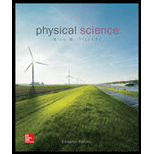
Physical Science
11th Edition
ISBN: 9780077862626
Author: Bill Tillery, Stephanie J. Slater, Timothy F. Slater
Publisher: McGraw-Hill Education
expand_more
expand_more
format_list_bulleted
Concept explainers
Textbook Question
Chapter 22, Problem 7PEB
A helium balloon at sea level had a volume of 1.50 m3 when it was filled. The barometric pressure at sea level was 1,013 hPa. What was the volume of the balloon, in m3, when it reached an altitude where the pressure was 560 hPa?
Expert Solution & Answer
Want to see the full answer?
Check out a sample textbook solution
Students have asked these similar questions
A helium balloon had a volume of 1.50 m when it was filled at an altitude where the atmospheric pressure was 775 hPa. What was the atmospheric pressure of the balloon, in hPa, at an altitude where its volume was 1.2 m3?
What is the mass in kilograms of the air in a scuba tank that has an internal volume of 0.0100 m^3 and is pressurized so that the density of the air in the tank is 240 kg/m^3?
If volume of a house is 232.198m3 and the density of air is 1.2kg/m3.
What is the mass of air in the house?
Chapter 22 Solutions
Physical Science
Ch. 22 -
1. The science that studies the atmosphere and...Ch. 22 -
2. Up from the surface, 99 percent of the mass of...Ch. 22 - Prob. 3ACCh. 22 - Prob. 4ACCh. 22 - Prob. 5ACCh. 22 - Prob. 6ACCh. 22 - Prob. 7ACCh. 22 -
8. Atmospheric pressure is measured using...Ch. 22 -
9. Which molecules in the atmosphere absorb...Ch. 22 - Prob. 10AC
Ch. 22 - Prob. 11ACCh. 22 -
12. What is the layer of the atmosphere where...Ch. 22 - Prob. 13ACCh. 22 - Prob. 14ACCh. 22 - Prob. 15ACCh. 22 -
16. Ultraviolet radiation is filtered by
a. the...Ch. 22 - Prob. 17ACCh. 22 - Prob. 18ACCh. 22 - Prob. 19ACCh. 22 - Prob. 20ACCh. 22 - Prob. 21ACCh. 22 - Prob. 22ACCh. 22 - Prob. 23ACCh. 22 - Prob. 24ACCh. 22 -
25. The basic shapes of clouds do not...Ch. 22 - Prob. 26ACCh. 22 - Prob. 27ACCh. 22 - Prob. 28ACCh. 22 - Prob. 29ACCh. 22 - Prob. 30ACCh. 22 - Prob. 31ACCh. 22 - Prob. 32ACCh. 22 - Prob. 33ACCh. 22 - Prob. 34ACCh. 22 - Prob. 35ACCh. 22 - Prob. 36ACCh. 22 - Prob. 37ACCh. 22 - Prob. 38ACCh. 22 - Prob. 39ACCh. 22 - Prob. 40ACCh. 22 - Prob. 41ACCh. 22 - Prob. 42ACCh. 22 - Prob. 43ACCh. 22 -
44. Without adding or removing any water vapor, a...Ch. 22 - Prob. 45ACCh. 22 - Prob. 46ACCh. 22 - Prob. 47ACCh. 22 - Prob. 48ACCh. 22 - Prob. 1QFTCh. 22 - Prob. 2QFTCh. 22 - Prob. 3QFTCh. 22 - Prob. 4QFTCh. 22 - Prob. 5QFTCh. 22 -
6. Explain the relationship between air...Ch. 22 - Prob. 7QFTCh. 22 -
8. Provide an explanation for the observation...Ch. 22 - Prob. 9QFTCh. 22 - Prob. 10QFTCh. 22 - Prob. 11QFTCh. 22 - Prob. 12QFTCh. 22 - Prob. 13QFTCh. 22 -
1. Describe how you could use a garden hose and a...Ch. 22 - Prob. 2FFACh. 22 - Prob. 3FFACh. 22 -
4. Evaluate the requirement that differential...Ch. 22 - Prob. 5FFACh. 22 -
1. On the scale of a basketball, how thick, in...Ch. 22 -
2. If a piece of plastic food wrap is being...Ch. 22 - Prob. 3PEBCh. 22 - Prob. 4PEBCh. 22 - Prob. 5PEBCh. 22 -
6. If the atmospheric pressure in the eye of a...Ch. 22 -
7. A helium balloon at sea level had a volume of...Ch. 22 -
8. A helium balloon had a volume of 1.50 m3 when...Ch. 22 - Prob. 9PEBCh. 22 - Prob. 10PEBCh. 22 -
11. If the temperature on the edge of the Grand...Ch. 22 -
12. If the insolation of the Sun shining on...Ch. 22 -
13. If the insolation of the Sun shining on...Ch. 22 -
14. In the evening, a stick measuring 0.75 m...Ch. 22 -
15. If outside air with an absolute humidity of 4...
Additional Science Textbook Solutions
Find more solutions based on key concepts
Using the definitions in Eqs. 1.1 and 1.4, and appropriate diagrams, show that the dot product and cross produc...
Introduction to Electrodynamics
The magnitude of force of gravity.
Physics (5th Edition)
What is the maximum magnetic intensity in a plane electromagnetic wave whose maximum electric intensity is 100 ...
Introduction To Health Physics
an exact quantity that people agree to use to compare measurements.
Glencoe Physical Science 2012 Student Edition (Glencoe Science) (McGraw-Hill Education)
What is a concept?
Integrated Science
What class of motion, natural or violent, did Aristotle attribute to motion of the Moon?
Conceptual Physics (12th Edition)
Knowledge Booster
Learn more about
Need a deep-dive on the concept behind this application? Look no further. Learn more about this topic, physics and related others by exploring similar questions and additional content below.Similar questions
- If a 50 kg ballet dancer standing flat-footed on one foot exerts a pressure of 33,500 Pa on the floor stands on her toe (area 0.00117 m2), what pressure (in Pa) does she exert on the floor?arrow_forwardFind the density at an altitude where the pressure is 628 psf in the standard atmospherearrow_forwardAn aircraft is flying at an altitude where the density is 0.001956 slug/cubic feet. what is the density altitude?arrow_forward
- If the balloon had a volume of 2 L at a depth of 50 m, what was the original volume of the balloon if we assume the pressure at the surface of the water is 14.7psi ?arrow_forwardThe air pressure at an altitude of 5.6 k is 7.4 lb/sq in. What is the atmospheric pressure at this altitude in millibars?arrow_forwardA rock weighs 10 N in air and 9.5 N in water. The volume of the rock is equal to 0.5 cm3 or 5 cm3 or 50 cm3 or 500 cm3 or 5000 cm3 ?arrow_forward
- A hot air balloon has a volume 3,223 m^3. It is filled with hot air of density 0.96 kg/m^3. The total mass of the cabin, envelope etc is 350 kg. Find the maximum load of the balloon in Newton’s if the surrounding density of the air is 1.29kg/m ^3. I got 6,993.2arrow_forwardThe density of aluminum is 2.7 g/cm^3. How much mass is contained in a chunk of aluminum with a volume of 379mL?arrow_forwardA 50 kg ballet dancer standing flat-footed on one foot exerts a pressure of 33,500 Pa on the floor. What is the area of her foot (in m2)? If the ballet dancer in the previous question stands on her toe (area 0.00213 m2), what pressure (in Pa) does she exert on the floor?arrow_forward
- The area of contact between an injection needle and the skin is a very tiny circle with a diameter of 2.54x10-3cm. If the needle exerts a force of 6.9x10-2N, what is the pressure in Pa?arrow_forwardAtmospheric pressure is 100,000N/sq.m and the density of air is 1.29 kg/cu.m. If the density of air is constant as you get higher and higher, calculate the height of the atmosphere needed to produce this pressure.arrow_forwardFind the altitude in meters where the pressure is 60,000 Pa in the standard atmosphere.arrow_forward
arrow_back_ios
SEE MORE QUESTIONS
arrow_forward_ios
Recommended textbooks for you
 College PhysicsPhysicsISBN:9781305952300Author:Raymond A. Serway, Chris VuillePublisher:Cengage Learning
College PhysicsPhysicsISBN:9781305952300Author:Raymond A. Serway, Chris VuillePublisher:Cengage Learning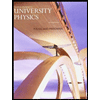 University Physics (14th Edition)PhysicsISBN:9780133969290Author:Hugh D. Young, Roger A. FreedmanPublisher:PEARSON
University Physics (14th Edition)PhysicsISBN:9780133969290Author:Hugh D. Young, Roger A. FreedmanPublisher:PEARSON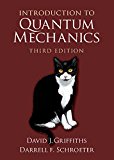 Introduction To Quantum MechanicsPhysicsISBN:9781107189638Author:Griffiths, David J., Schroeter, Darrell F.Publisher:Cambridge University Press
Introduction To Quantum MechanicsPhysicsISBN:9781107189638Author:Griffiths, David J., Schroeter, Darrell F.Publisher:Cambridge University Press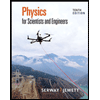 Physics for Scientists and EngineersPhysicsISBN:9781337553278Author:Raymond A. Serway, John W. JewettPublisher:Cengage Learning
Physics for Scientists and EngineersPhysicsISBN:9781337553278Author:Raymond A. Serway, John W. JewettPublisher:Cengage Learning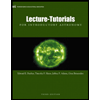 Lecture- Tutorials for Introductory AstronomyPhysicsISBN:9780321820464Author:Edward E. Prather, Tim P. Slater, Jeff P. Adams, Gina BrissendenPublisher:Addison-Wesley
Lecture- Tutorials for Introductory AstronomyPhysicsISBN:9780321820464Author:Edward E. Prather, Tim P. Slater, Jeff P. Adams, Gina BrissendenPublisher:Addison-Wesley College Physics: A Strategic Approach (4th Editio...PhysicsISBN:9780134609034Author:Randall D. Knight (Professor Emeritus), Brian Jones, Stuart FieldPublisher:PEARSON
College Physics: A Strategic Approach (4th Editio...PhysicsISBN:9780134609034Author:Randall D. Knight (Professor Emeritus), Brian Jones, Stuart FieldPublisher:PEARSON

College Physics
Physics
ISBN:9781305952300
Author:Raymond A. Serway, Chris Vuille
Publisher:Cengage Learning

University Physics (14th Edition)
Physics
ISBN:9780133969290
Author:Hugh D. Young, Roger A. Freedman
Publisher:PEARSON

Introduction To Quantum Mechanics
Physics
ISBN:9781107189638
Author:Griffiths, David J., Schroeter, Darrell F.
Publisher:Cambridge University Press

Physics for Scientists and Engineers
Physics
ISBN:9781337553278
Author:Raymond A. Serway, John W. Jewett
Publisher:Cengage Learning

Lecture- Tutorials for Introductory Astronomy
Physics
ISBN:9780321820464
Author:Edward E. Prather, Tim P. Slater, Jeff P. Adams, Gina Brissenden
Publisher:Addison-Wesley

College Physics: A Strategic Approach (4th Editio...
Physics
ISBN:9780134609034
Author:Randall D. Knight (Professor Emeritus), Brian Jones, Stuart Field
Publisher:PEARSON
Newton's First Law of Motion: Mass and Inertia; Author: Professor Dave explains;https://www.youtube.com/watch?v=1XSyyjcEHo0;License: Standard YouTube License, CC-BY